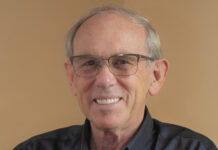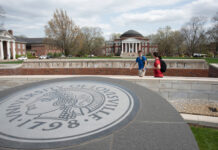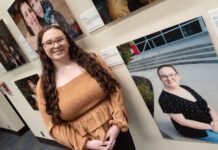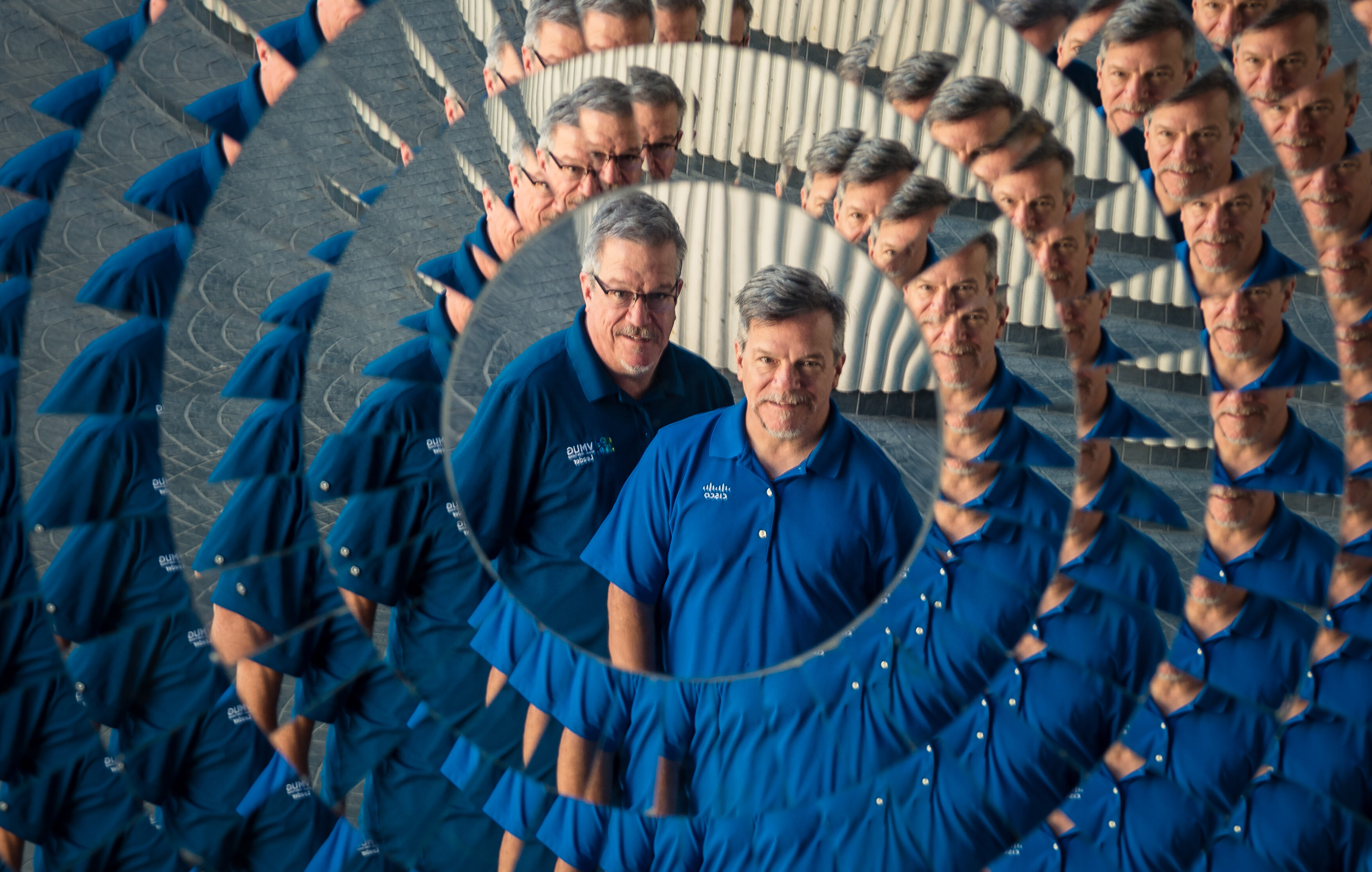Charlene Myles and Darlene Almont have always looked pretty much alike. The twin sisters had the same hair color, similar build and matching facial features. But when they were enrolled in the Louisville Twin Study as newborns 50-some years ago, researchers were more interested in how these genetically identical twins would start to differ over time.
Every so often, the girls would take a cab downtown to UofL, where researchers would measure their height and weight and check their eye and hair color, comparing them to different swatches. The girls would sit in a room and play with colorful rings, puzzles, blocks and other toys.
“At least for me, when it was time to go, it was a treat,” Almont said. “We didn’t even realize it was a test — they were games.”
The “games” helped researchers collect information on the mental development, cognitive intelligence and behavior in the largest, longest-running longitudinal study of twins ever conducted. Before funding ran out, they studied roughly 1,100 twins from 1957 to 2000.
But now, after 20 years, the Louisville Twin Study lives again thanks to a new five year, $5.5 million grant from the National Institutes of Health. Deborah Winders Davis, a UofL researcher and director of the study, and colleagues at the University of Southern California are bringing the twins back to study them later in life.
Twins provide a sort of natural “control” test, Davis said, starting out with the same genetics and initial environment. But as they age and make choices — such as what they eat, whether and how they exercise and where they live — they start to diverge. Understanding that could give researchers insight into disease, cognition and other health issues.
“They share the same environment,” Davis said. “So, you can look at all kinds of outcomes over time and see how much of that was influenced by their biological makeup and how much of it was from their environment.”
Davis’ predecessors collected a treasure trove of data — many, many file cabinets’ worth — that now sit outside her office at the UofL Health Sciences Center. That data helped the researchers make the case this study should be revived.
The goal, she said, is to catalog a lifetime’s span of biological and cognitive health. The past data covers childhood, adolescence and, occasionally, early adulthood. With the study’s twins now in their 40s, 50s and 60s, the new research focuses on midlife health issues.
“The new study is looking at factors that are associated with Alzheimer’s and other forms of dementia,” Davis said. “And then also looking at how factors in your childhood … might be predictors of cognitive functioning in midlife.”
Returning to the study
In 2019, the researchers began calling twins back from all over the country. Davis said many were eager to return to UofL, where they remember coming as kids.
Patrick and David Moore were born on an Air Force base in Wichita, Kansas, and moved back to Louisville after their dad was discharged. They were enrolled in the Twin Study when they were just over a year old and came in for testing about once a year until their teens.
“We always looked forward to visiting because it started out with a ride in a Yellow Cab downtown,” David said. “What a treat. When we arrived, the staff was happy to see us and we seemed to be the stars.”
After receiving new funding, researchers are hoping to locate all of the originally studied
twins, including the Moores, sisters Julie McCain and Jenny Beckham, and Myles — who still
live in Louisville.
Of the twins researchers did locate, 40 came to UofL for in-person interviews and to be tested on their cognitive, memory, biometric and functional ability. For that test, the Moore brothers play the same puzzles and games they did as kids. They went to the same building, though the room had changed.
“It was nice to go back and hear updates on what they are doing 50 years later,” Patrick said.
The only thing missing, David said, was a bulletin board full of photos of all the twins. Each time the brothers came in for testing, he would look for the Moore brothers’ photo, the two of them identical were it not for the freckle on Patrick’s upper lip.
But as they grew, the Moores started to have small differences caused by their experiences, environment and other factors — one is now an inch or two taller and has more gray hair, though both now work in technology.
Like the Moore brothers, McCain and Beckham were always difficult to tell apart — so much so that one of their now- husbands once confused them. As adults, they’re less alike: one is more outgoing and one is taller. Beckham said those emerging differences, and figuring out what causes them when genetics is ruled out, are why the Twin Study research is important.
“I just think this is one of the only ways to study that,” Beckham said. “Because our genes are all so different, that when you have two people that have the same genes, you really can extract what caused something.”
There are a few types of twins. Identical twins are monozygotic, meaning they come from the same zygote. Fraternal twins are dizygotic, meaning they come from two separate zygotes and do not have the same genetics. All types of twins were included in the study. McCain and Beckham are identical and so are the Moore brothers. Sisters Almont and Myles are nearly identical — but not quite. When they were born, doctors factored their blood out to 32 degrees and discovered the sisters are “mirror identical.”
In these cases, according to Scientific American, twins often have opposite features and tendencies. For example, one sister is left-handed and one is right-handed. One’s an introvert and one’s an extrovert. One’s analytical and the other’s creative. One was an ice skater and cheerleader in high school and the other was more studious.
For Almont, who also was born with the muscle disorder Poland syndrome while her sister was not, the Louisville Twin Study also represents a unique opportunity to explore all different variations of “twinness.”
“It’s just the complexity of what it is to be human,” said Almont, who now works in intelligence in Washington, D.C. “It’s in studying twins and all these different iterations of twinness that you can come to that realization. Having us in the dataset shows that twinness is a lot more complicated than we thought before.”
All grown up
Myles and Almont grew up surrounded by identical twins. Within three generations on their mom’s side, there are five sets of twins — four identical sets of girls and one set of fraternal twins.
“They all went to the twin study,” said Myles, now an English as a Second Language teacher for Franklin County Public Schools. “I don’t remember a time we weren’t in the Twin Study. It made us feel like we were part of something important. If I can go back and be a lifetime participant, I’m happy to do so.”
Becoming a lifetime participant was crucial. Without the return of Myles and the other twins who were originally part of the study, it could have taken another 50 or so years before a new study could have reproduced the data the Louisville Twin Study has gathered.
The first midlife issue that researchers are examining is memory, particularly related to Alzheimer’s and dementia. In the revival pilot study conducted in 2019, researchers tested the participants’ biological age compared with their chronological age. Biological age measures the wear and tear on your body and mind, while chronological age is a direct measure of how long you’ve lived. For example, a person could be 50 chronologically but have a biological age of 30 due to diet, exercise or biological predisposition.
The researchers then compared each of these metrics with the twins’ cognitive function and cognitive development. The results, published in the journal Behavioral Genetics, showed no correlation between biological age and IQ, but there was a correlation between lower biological age and episodic memory. In other words, maintaining a lower biological age may be correlated with a better memory in older age. That information could help researchers discover new ways to prevent cognitive decline.
Now that the twins are back, the researchers plan to continue the study through the later phases of the life cycle.
“I honestly think of [this study] as a national treasure,” Almont said. “There’s no way you can replicate the body of research and data that has been collected. If they hadn’t done that, they couldn’t study these later life issues.”



























